4K – What do I need to know?
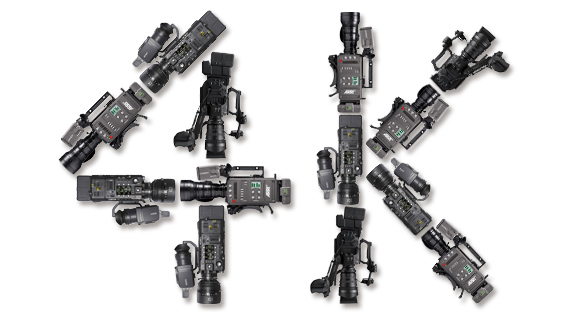
Everyone’s talking about it: 4K is the hottest buzz word of the moment. It’s a technology that’s rewriting the rulebook when it comes to image quality but what exactly is it, is anyone actually shooting in it and what do you need to consider when it comes to 4K production, now and for the future.
What is 4K?
The headline fact is simple and dramatic: 4K delivers four times as much detail as full HD – that’s eight million pixels compared to two million pixels. It is a fully progressive format.
This means startlingly clear, high resolution images with more fine detail, greater texture and an almost photographic smoothness.
Full 4K, which is digital cinema standard, has a resolution of 4096×2160 and a cinema style aspect ratio. Ultra HD (or UHD) is a derivation of this and a TV format with a slightly lower resolution of 3840×2160 and an aspect ratio of 16:9.
Compared to HD which offers 1920×1080 pixels and SD which is 720×576 and you can see why the techy world is going 4K crazy.
Massive infrastructure required
The truth is, very few broadcasters have the capacity to broadcast in 4K so very little is being commissioned in 4K. Such high resolution requires a massive infrastructure that few have in place or can afford to even contemplate. While there have been a number of trials (notably by the BBC and Sky), most 4K content has to be streamed via broadband.
But despite all this, 4K is growing in popularity amongst the production community.
Why is anyone shooting 4K?
Future proofing is one of the key reasons programme makers are shooting 4K now. If footage is likely to have a long shelf life or be revisited, acquiring in the highest res possible is a smart move. In years to come and once broadcasters have caught up, entire projects can be regenerated in 4K by going back to the 4K rushes. For now, programme makers who have filmed in 4K down-convert their footage to HD for delivery.
This is another reason programme makers may choose to shoot in 4K now. In down-grading from 4K to HD, the extra detail captured by the 4K camera is retained so image quality is superlative. If you want to deliver high quality pictures, this could be a good choice.
4K acquisition can also be useful if your HD standard project requires visual effects. Re-sizing and re-framing an image shot in 4K is possible without losing HD resolution. Re-sizing and re-framing can also allow it to appear that you’ve shoot an additional angle – so 4K can cover you.
Extra costs and technical challenges
Because 4K records at a higher resolution that HD, it produces more data and naturally this has effect on management, storage and download times. For example, a Sony PMW-F55 will produce 128Gb of data an hour when shooting UHD XAVC I 25p and a ARRI AMIRA will produce 180Gb of data an hour when shooting UHD ProRes 422HQ 25p.. In order to work with this amount of data on location, you’ll need plenty of drives and a MacBook Pro or iMac with Thunderbolt and Raid storage. You’ll also need to ensure your connection is operating at X speed. A dedicated Data Wrangler or DIT (Digital Imaging Technician) is a must to manage the sheer quantity of media; it’s probably too much to expect production teams who’ve been shooting all day to data wrangle such large files, which could potentially take all night. This all adds to the complexity of your workflow and, of course, has serious repercussions on your budget.
Given these extra costs and technical challenges, not all projects are sensibly suited to filming in 4K. For productions that generate a large amount of rushes for example, like factual, reality or entertainment, it’s not the best option. TV dramas, features, natural history, music, sport and important live events, however, can expect a longer shelf life and are looking to achieve high picture quality. Commercials too are regularly shot in 4K as they typically have larger budgets and are often seen in the cinema as well as on TV.
4K cameras
Shooting 4K is becoming more affordable with a wealth of lower cost and more versatile 4K capable cameras recently announced by manufacturers.
Sony’s PMW-F5 and PMW-F55 both have a super35 sensor and can shoot 150fps (PAL), 180fps (NTSC) and 240fps (2KRAW). Their XAVC codec (shooting to SxS Pro+cards) is very efficient at compressing a 4K image meaning file sizes and therefore storage needs are reduced. Adding the AXS-R5 recorder enables the shooting of 4K RAW.
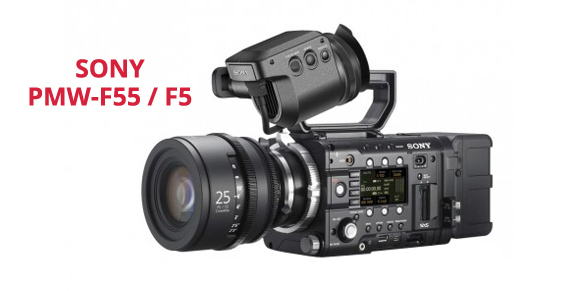
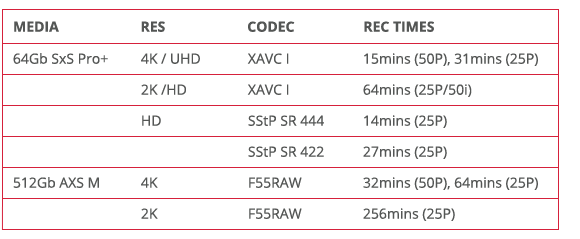
The ARRI AMIRA uses the same super35 sensor as the ARRI ALEXA but in an ENG style body and can capture up to 200fps. It shoots to CFast 2.0 cards.
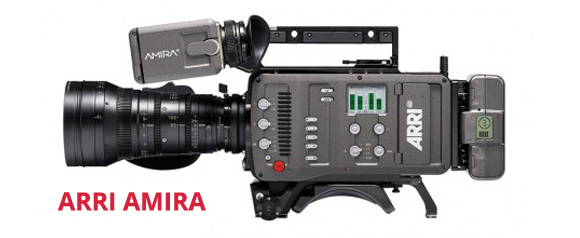
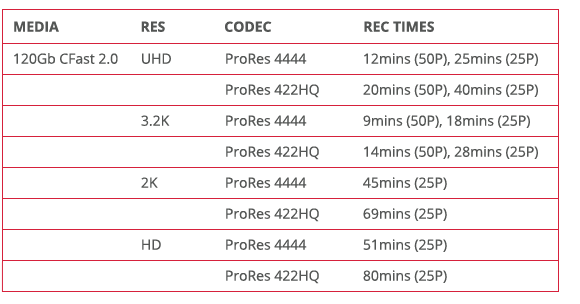
The Sony FS7 has a 4K super35 CMOS sensor with up to 4K internal UHD plus the ability to shoot up to 180 fps (NTSC) or 150fps (PAL). It records to XQD cards.
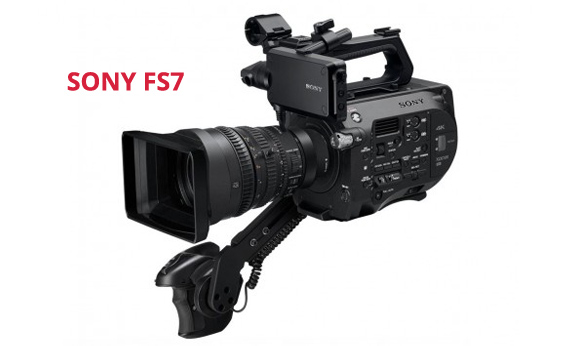
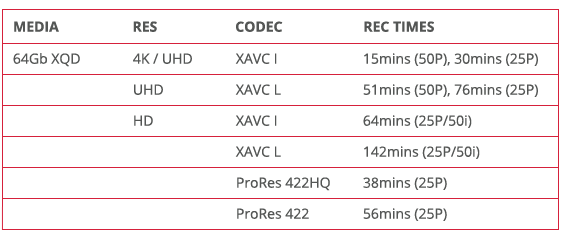
In our experience, these are the most popular 4K capable cameras currently on the market to hire but alternatives are available from other manufacturers including RED and Blackmagic.
4K standard not yet set
If you’re contemplating shooting in 4K, it’s well worth keeping in mind that the universal standard for 4K for the UK and Europe has not yet been set. To truly future proof therefore, it would be advisable to shoot at the highest possible resolution with the highest quality codec, allowing you downgrade options if and when the time comes. The expectation is that 50p will likely be the frame rate standard so we’d suggest avoiding 25p (which would then be irreversible).
For more information or for help and advice, please contact [email protected]
Monday, June 22nd, 2015
Tags
- Sensors (3)